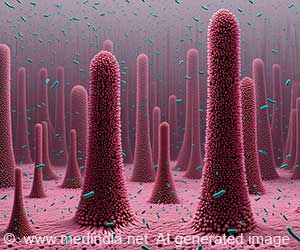New wireless wearable UV sensor can monitor real-time exposure to harmful ultraviolet (UV) radiation during outdoor activities and also when UV rays are used as the treatment for certain conditions like neonatal jaundice, skin diseases, and can reduce the risk of sunburns and skin cancer.
- Wireless sensor is able to reliably track exposure to harmful UV radiation of persons engaging in outdoor activities or undergoing UV light treatment for certain conditions
- Ultraviolet rays from the sun are capable of damaging the DNA of the cell resulting in skin cancer and other forms of skin damage; staying in the sun for prolonged periods increases skin cancer risk
- Skin cancer is on the rise globally and expected to rise rapidly by 2050 and will create a huge burden on the healthcare system as well
- The study team created this low cost device that works on “system on chip” technology and measures various forms of radiation. The details of UV exposure can be read on a smartphone monitor linked to the sensor
- The sensor reliably measured UVA and UVB light exposure in healthy volunteers who engaged in outdoor leisure activities such as walking and swimming over a period of four days. The sensor remained functional and correctly recorded solar exposure data
- The sensor is made in various shapes and sizes and accurately measures UVA and UVB radiation exposure during phototherapy treatment for certain skin conditions and in preterm babies receiving blue light therapy for neonatal jaundice
- The device was sturdy and remained functional even after passing through a washing machine cycle
TOP INSIGHT
New wireless sensor device is flexible and a low-cost technology, which can distinguish between UVA and UVB radiation accurately. People who use it can glue it to their hat, clip it to sunglasses and can even stick it on their nail.
Read More..
- Battery operated sensors have a limited life depending on the battery quality
- Even among wireless sensors, some devices do not measure real-time exposure to UV light; they measure visible light and calculate UV radiation amount from that value which may not be accurate
- Existing sensors do not differentiate between UVA and UVB radiation
- UV sensor stickers worn on the skin change color when exposed to UV radiation but do not quantify the exposure
What are Ultraviolet Rays?
Ultraviolet rays from the sun are harmful ionizing radiation that can damage the DNA within the cell and cause cancer. There are two types of ultraviolet radiation namely UVA and UVB. Both are ionizing radiation and can cause skin cancer but UVB is much more harmful. UVA mainly causes skin aging and the development of wrinkles while UVB can cause skin burns and more severe damage.Measures to Prevent Skin Cancer
- Reduce sun exposure
- Use adequate sun protection including protective headgear and clothes, using sunscreens
- Avoid heavy tanning
- Self-examination of skin and see a doctor immediately if anything new or abnormal
Reference:
- Wireless, battery-free, flexible, miniaturized dosimeters monitor exposure to solar radiation and to light for phototherapy - (http://stm.sciencemag.org/content/10/470/eaau1643)
Source-Medindia
 MEDINDIA
MEDINDIA




 Email
Email





